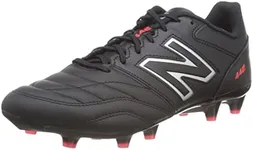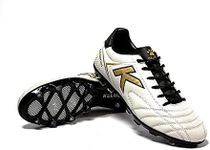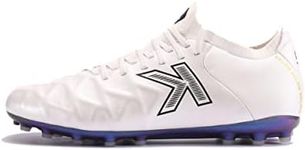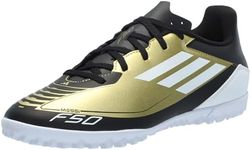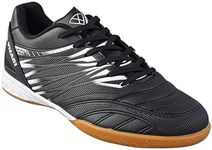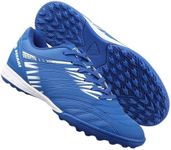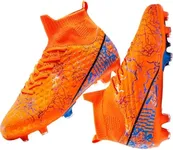Buying Guide for the Best Artificial Grass Soccer Cleats
Choosing the right artificial grass soccer cleats is crucial for your performance and comfort on the field. The right pair can enhance your grip, stability, and overall play. When selecting soccer cleats for artificial grass, consider the following key specifications to ensure you get the best fit for your needs.Stud ConfigurationStud configuration refers to the arrangement and number of studs on the sole of the cleat. This is important because it affects your traction and stability on artificial grass. For artificial grass, look for cleats with shorter, more numerous studs that are evenly distributed. This helps to provide better grip and reduces the risk of injury. If you play on artificial grass regularly, prioritize cleats specifically designed for this surface.
MaterialThe material of the cleat affects its durability, weight, and comfort. Common materials include leather and synthetic. Leather cleats offer a good fit and comfort but may be heavier and less durable on artificial grass. Synthetic materials are lighter, more durable, and often more affordable. If you prioritize comfort and a natural feel, leather might be the way to go. If you need durability and lightweight performance, synthetic materials are preferable.
FitFit is crucial for comfort and performance. A well-fitting cleat should be snug but not too tight, allowing for natural movement without causing blisters. Cleats come in various widths and sizes, so it's important to try them on and walk around to ensure they fit well. If you have wider feet, look for brands that offer wider options. Always consider the type of socks you will wear during play when assessing the fit.
WeightThe weight of the cleat can affect your speed and agility on the field. Lighter cleats can help you move faster and feel less fatigued, while heavier cleats might offer more protection and durability. If you play in a position that requires a lot of running and quick movements, such as a winger or forward, lighter cleats might be beneficial. For positions that require more stability and protection, like a defender, slightly heavier cleats could be more suitable.
CushioningCushioning in soccer cleats provides comfort and can help reduce the impact on your feet and joints. This is particularly important on artificial grass, which can be harder than natural grass. Look for cleats with good insole cushioning and shock absorption features. If you have a history of foot or joint issues, prioritize cleats with enhanced cushioning to help prevent discomfort and injuries.
Ankle SupportAnkle support can help prevent injuries and provide stability during play. Cleats come in low-cut, mid-cut, and high-cut designs. Low-cut cleats offer more freedom of movement and are lighter, making them suitable for players who rely on speed and agility. Mid-cut and high-cut cleats provide more support and protection, which can be beneficial for players who need extra stability or have a history of ankle injuries. Choose the level of ankle support based on your playing style and injury history.




